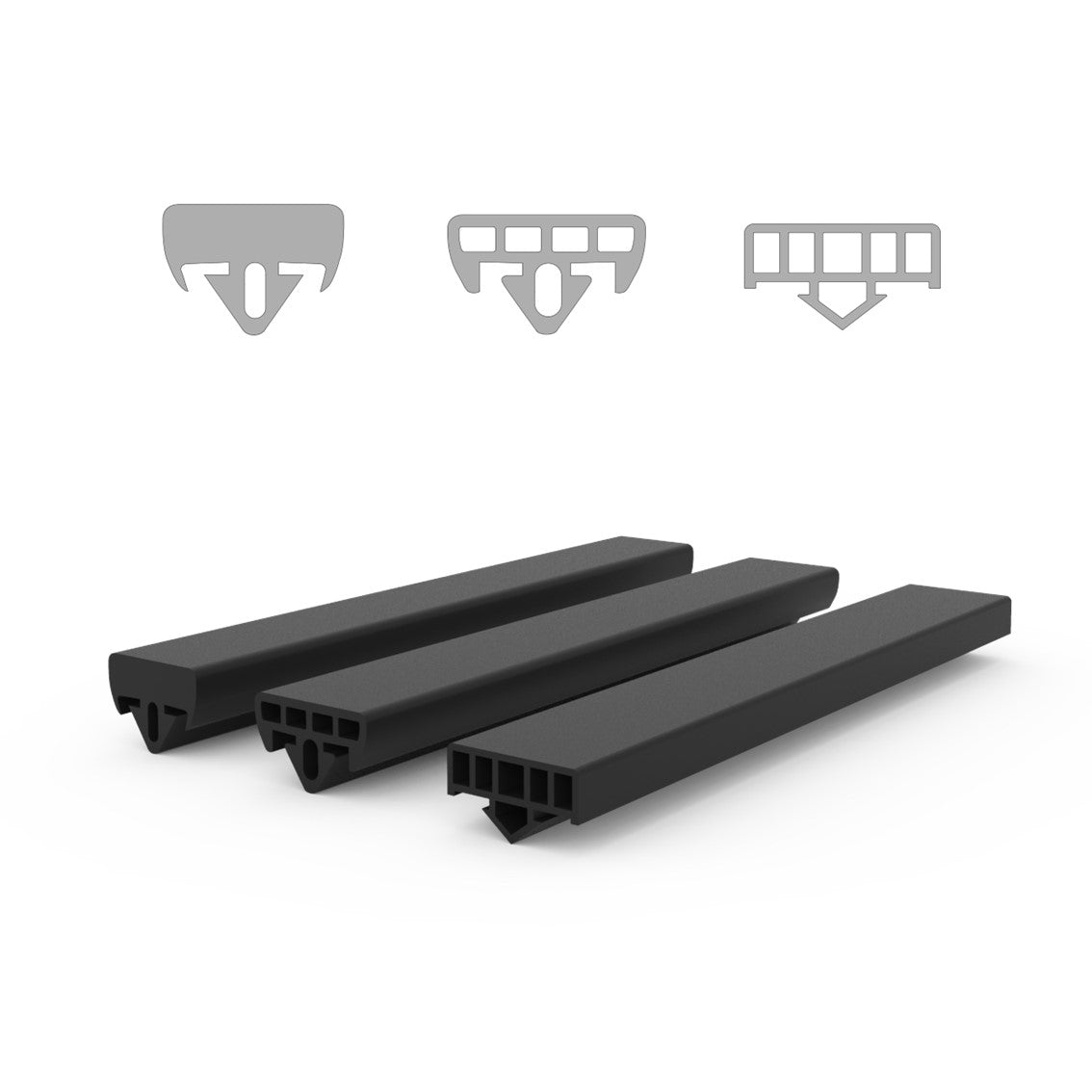Glass rack rubbers — materials and custom manufacturing
Glass rack rubbers are available in a wide range of profile shapes and materials to accommodate different handling, storage and transport requirements. Profiles can be manufactured to client drawings or specifications using elastomers and thermoplastics such as EPDM, neoprene, silicone and PVC, with options for varying shore hardness, reinforcement and surface finishes. For bespoke requirements, refer to our custom rubber extrusions for tailored profiles and tolerances. Production methods include continuous extrusion and cut-to-length fabrication to produce single or multi-component assemblies.
Glass rack protection — selection and application guidance
Glass rack protection focuses on preventing edge damage, abrasion and movement during handling while maintaining ease of loading and unloading. Profile selection should consider glass thickness, rack spacing, chemical exposure and environmental conditions to ensure appropriate resilience and compression set characteristics. Standard and engineered solutions exist for marine, construction and industrial environments; review our rubber extrusions for common profile families and material properties. Contact our team for technical advice on matching profile geometry and material to your application. RuplaTec supplies glass rack profiles manufactured to customer specifications and can advise on compatibility with existing racking systems.


